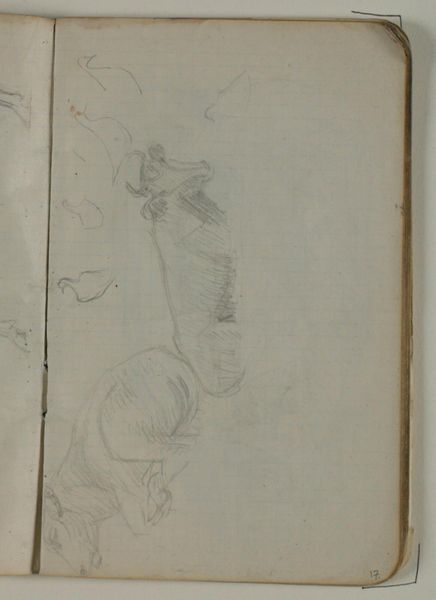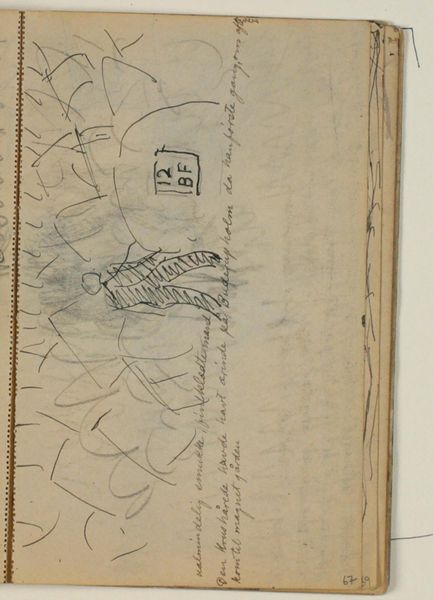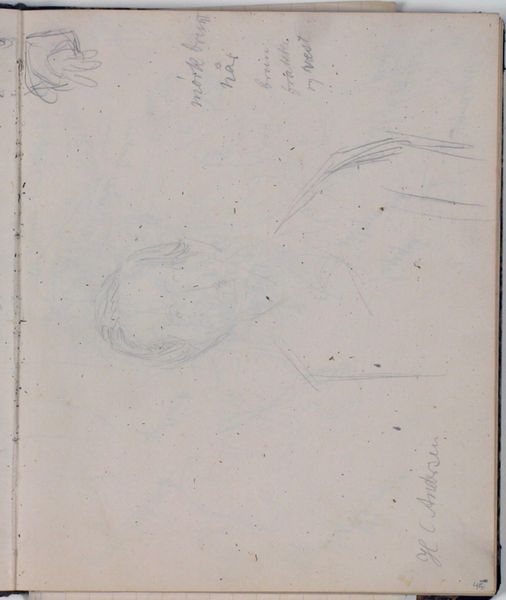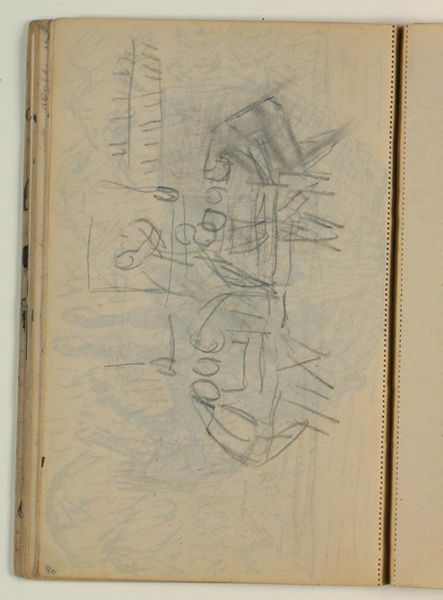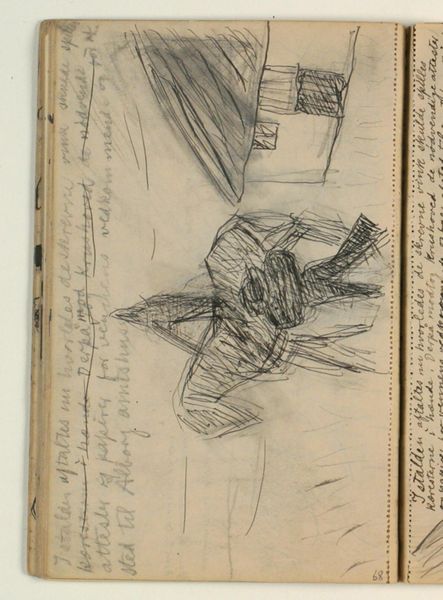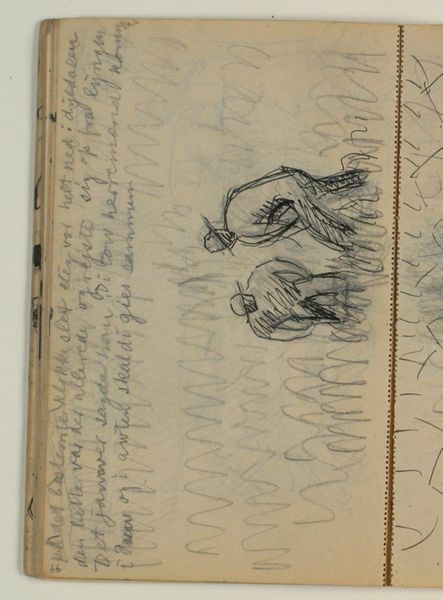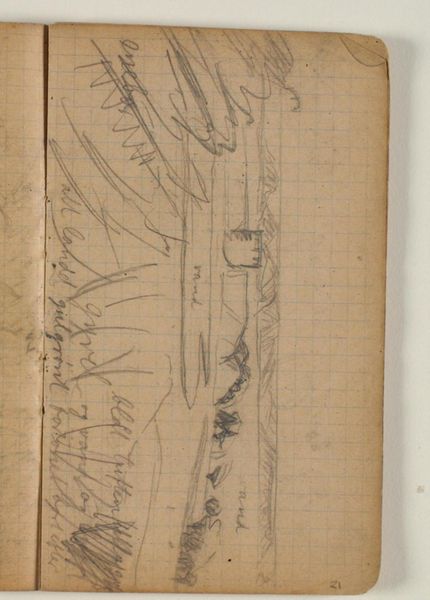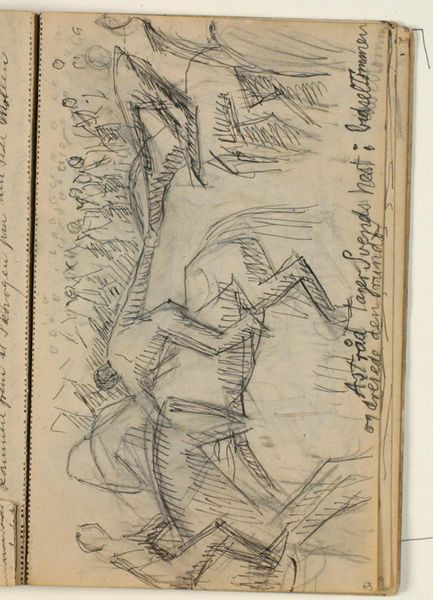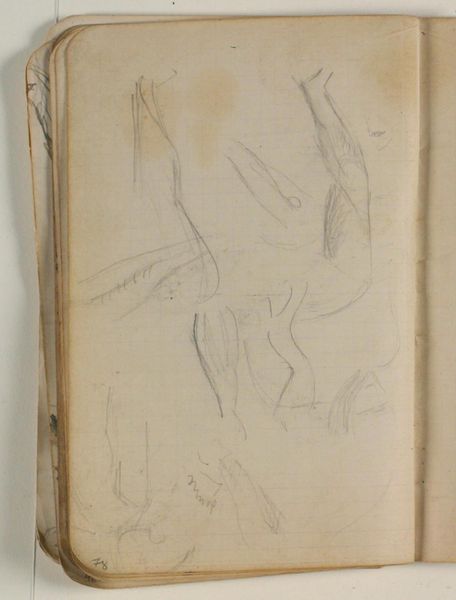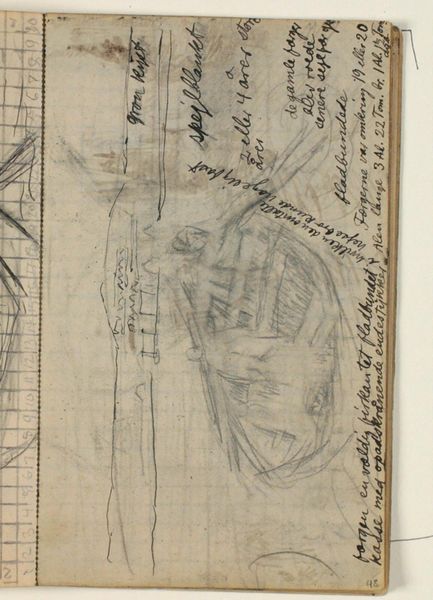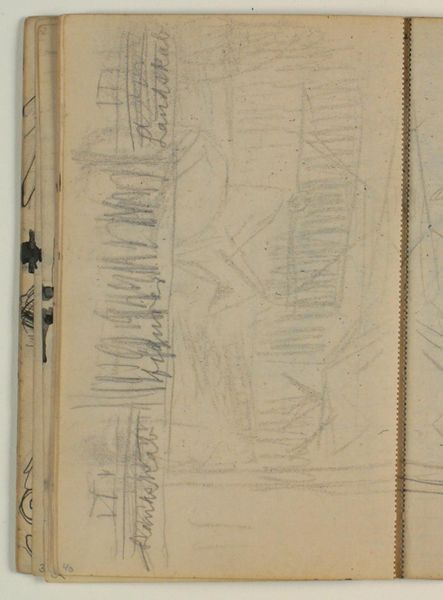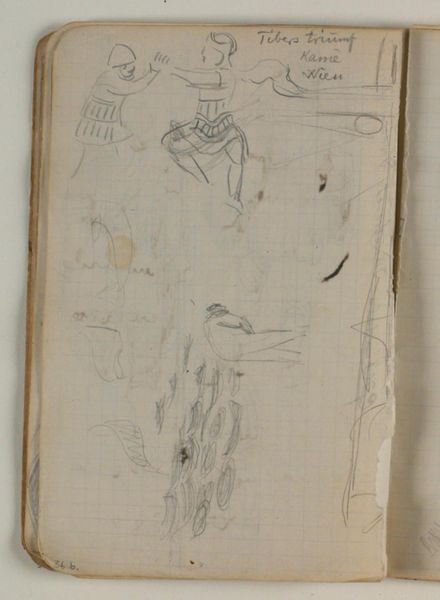
Kompositionsskitse til Blichers novelle "Bettefanden", p. 129, Afskrift fra samme, p. 129 l. 10-13 1932 - 1935
0:00
0:00
drawing, paper, pencil, graphite
#
portrait
#
drawing
#
narrative-art
#
figuration
#
paper
#
coloured pencil
#
pencil
#
graphite
#
modernism
Curator: Here we have "Kompositionsskitse til Blichers novelle "Bettefanden", p. 129, Afskrift fra samme, p. 129 l. 10-13", created by Niels Larsen Stevns between 1932 and 1935. It’s currently held here at the SMK, Statens Museum for Kunst. The piece combines pencil, graphite, and colored pencil on paper. Editor: My initial feeling is one of peering into the artist's intimate process. There's a rawness and immediacy, the hurried sketch lines almost vibrating with nervous energy, set against the ordered, handwritten text, suggesting maybe this figure’s story is already written. Curator: Precisely. It's fascinating to see how Stevns visually interprets Blicher's story. The figure dominates the sketch, crouched or fallen perhaps, a vortex of lines creating a sense of emotional turmoil. You'll notice the almost abstract treatment of the surrounding figures—triangles, rudimentary forms. They might represent societal judgment. Editor: I agree. The sketch reads to me as a symbol-laden representation of internal struggle made public, almost performed. Consider the theatrical presentation – the "audience" and then a lone figure who stands in contrast through gesture and composition. How does this narrative influence his choices in this study, versus the finished work? Curator: That tension, between the individual and society, the public versus the private…It mirrors so much in Blicher’s writing and then made so poignant through the economy of line here. It creates a very distinct psychology for the character and it echoes sentiments regarding social issues in Stevns’ life at the time, his thoughts toward the socio-economic struggles in Denmark. It also ties directly back to the historical interpretations and performance art symbolism within the theatrical world. Editor: Absolutely. And isn't that at the heart of narrative art? These figures, in turn, are a commentary on a universal human experience and an entry into an empathetic historical lens. Curator: Seeing this preliminary sketch underscores the deep roots connecting artistic interpretations of our collective historical identity, allowing viewers a glimpse into the artist’s private considerations. Editor: Ultimately, this work, regardless of completion, has a fascinating sense of place, society, and time, a historical document frozen.
Comments
No comments
Be the first to comment and join the conversation on the ultimate creative platform.

